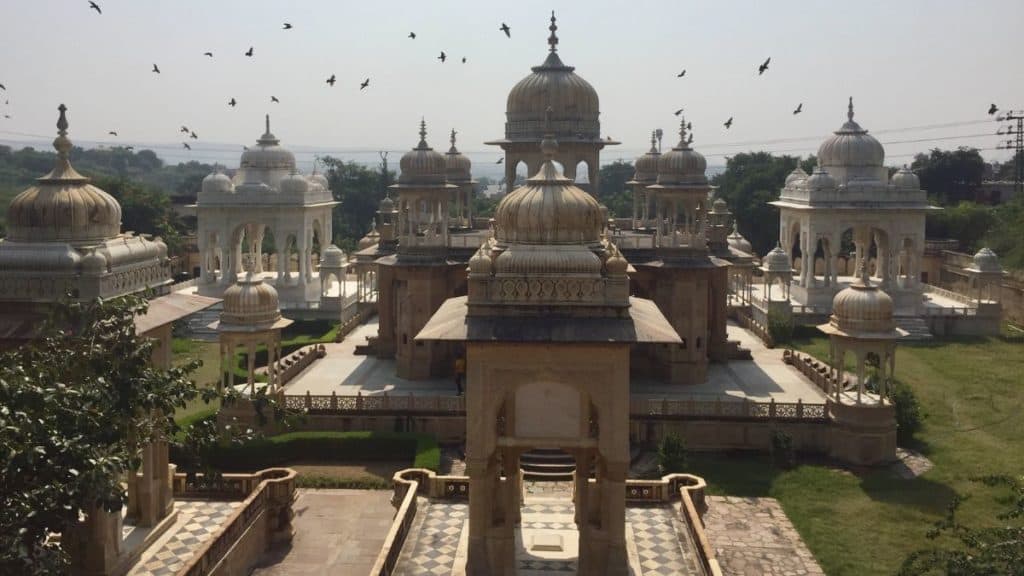Last Updated on June 3, 2023 by Ellen
One of the really cool things about Rajasthan’s capital city is that its people have a long record of trying to figure out the universe and humanity’s place in it. From karmic beliefs and kingly crematoriums, to a giant outdoor astronomy lab that has lasted centuries, there is a significant soulful vibe if you are open to it during your time in Jaipur.
A visitor can experience temples and palaces with stunning designs and deep meanings. The famous Hawa Mahal is probably the best example, known as the iconic image for the state’s the ‘Pink City’.
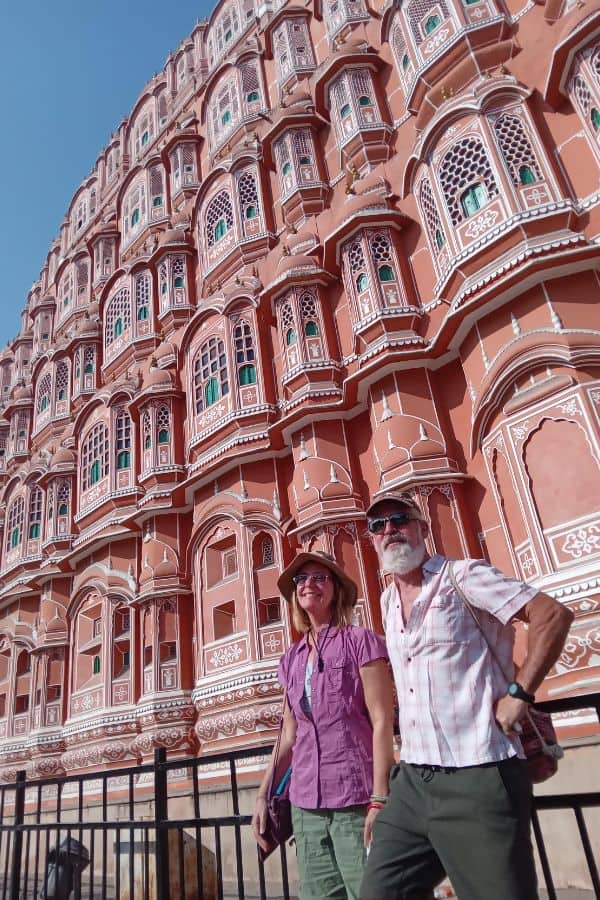
But two other sites strike me as spots for old-fashioned sightseeing with new-age introspection that are not temples, forts or palaces.
(My husband Theo and I enjoyed these before he was down with dengue fever for two weeks.)
Soulful vibes for your time in Jaipur
These two stops won’t take an entire day, so you can more fully pack your daily schedule if you want.
Or, if you’re a slow traveler who wants to feel something a little deeper during your time in Jaipur, I recommend you visit these two sites unhurriedly and relish in your reflection.
Jantar Mantar
The first stop has such ‘outstanding universal value’ that it’s a UNESCO World Heritage Site. (Designated as such by the United Nations Educational, Scientific and Cultural Organization.)
Jantar Mantar is an observatory. It is a working lab to view astronomical positions with your eyes. It’s also an astrology lab.
Astrology used to be a part of astronomy. Basically today, astronomy is the study of planets and stars, while astrology is the interpretation of how those celestial bodies affect human lives on Earth. By the middle of the 18th century, the two were separate in most cultures. Jantar Mantar was finished in 1734.
It is amazing to me how people that long ago figured out how to tell time by how shadows fell on devices they built. In fact, Jantar Mantar has the largest stone sundial in the world.
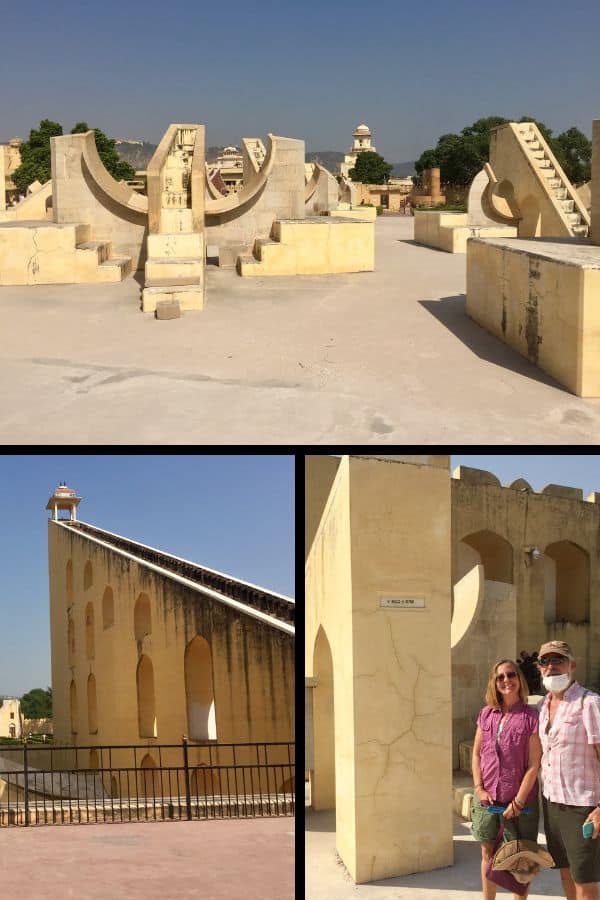
A guide explained how to tell time with the shadows (the next picture below). I never would have been able to figure it out on my own. But as soon as he showed us — SHAZAM! I got it.
He also explained how the other key devices work, including structures to observe the twelve astrological constellations.
And if you look closely at the picture on the bottom below, you can see steps into the “hemispheric bowl” that allow for closer shadow tracking exact astronomical positions.
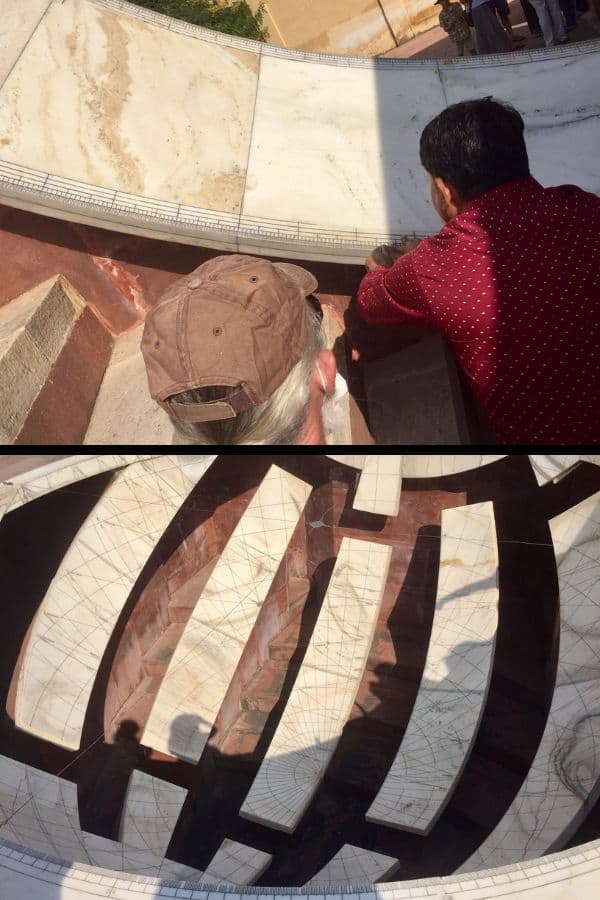
The site had fallen into disrepair a few times over the centuries, with a couple of major efforts for restoration. There is only one device that cannot be used by the public because children (of all ages) used it as a swing and damaged it.
I suggest you go to this site as soon it opens in the morning. By the time we left, it was hot and crowded. Depending on how into astronomy you are, you could easily spend three hours here.
More information can be found on the official Rajasthan government website.
The World Heritage Site information is on the UNESCO website.
Lastly, an associate professor at Cornell Unversity runs a website that feauters the Jantar Mantar in Jaipur. He also covers the other four observatories in northern India on his website, which were built around the same time by the same king.
Personal note on astrology
I have dabbled with astrology for nearly 30 years. And yet I never knew about Jantar Mantar until we arrived in Jaipur!
So, which astrological influence in my natal chart opens me up to experience a soulful vibe in Jaipur? Is it the Moon in my 12th House (Placidus house system)? Or might it be my Sun, Venus, Pluto in my 9th House (whole house system)?
There are no definite answers since astrology is open to individual interpretation. And since it’s not an exact science, most people think it’s hogwash.
I say: those people are missing out on exploring deeper elements of our existence and personalities, if nothing else.
‘Night Sky Tourism’ in Jaipur and Rajasthan
A special event during our time in Jaipur added to that soulful vibe of universal connectivity. We happened to be in the city during a partial solar eclipse!
Rajasthan’s Department of Science & Technology held a viewing party – but not on the Jantar Mantar grounds. Better viewing was just east of the old town area on a hill overlooking the city at the ‘Sun Temple’.
The representatives from the department were helpful and kind. They brought tools for the public to enjoy the partial solar eclipse, including high-powered telescopes. We donned special eclipse glasses, and we had a great time. A stranger took our photo with a filter to see the eclipse, and he shared it with us.
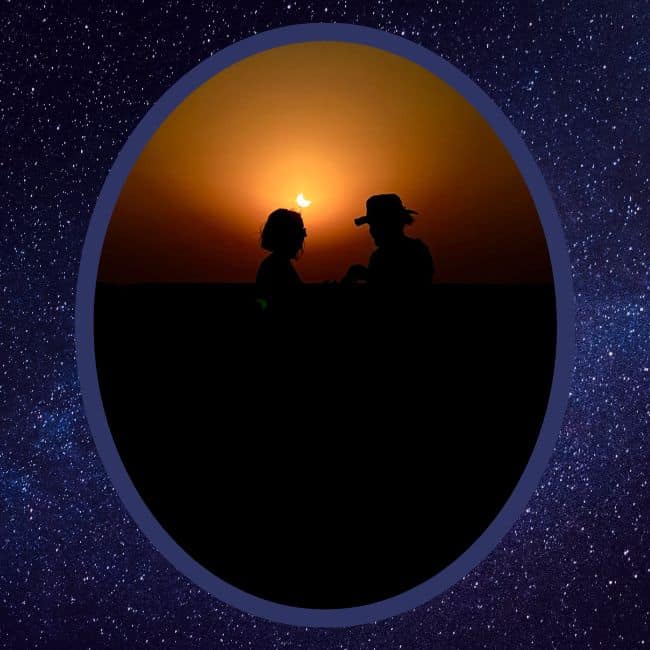
Incidentally, the Rajasthan government recently launched a ‘Night Sky Tourism’ effort in all of the state’s 33 districts.
Away from city lights, the desert sky at night is breathtaking. Especially on our camel-camping trip near the village of Barna, outside Jaisalmer.
Gatore Ki Chhatriyan
The second and last stop on our soulful vibe search in Jaipur is Gatore Ki Chhatriyan. This site is the cremation grounds and monument complex for the kings of Jaipur, and it is a quiet, welcome break from the chaos of modern Indian city life.
Each king’s structure is like a mini-palace. ‘Chhatri’ means umbrella, and each monument has an umbrella-like dome. The architecture is gorgeous, especially in sunlight.
In Hinduism, samsara is the reincarnation cycle: birth, life, death, rebirth. The cycle only ends with a soul overcoming ignorance and desires through many samsaras. Otherwise, the next incarnation is dependent on the karma built up in the previous life. Altruistic actions means a better incarnation next time.
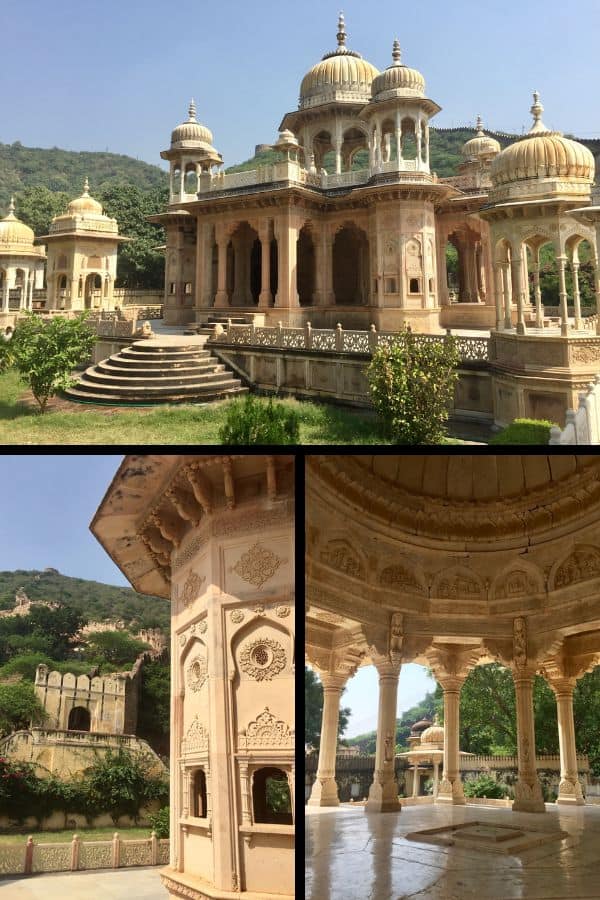
So what happened to the kings’ souls? Can you be reborn as a peasant if you built up ‘bad’ karma? Can a king be reborn as a king again?
In this way of the karmic scorecard, it seems to disregard that poor people can be much happier – and kinder – than ‘kings’. But I realize modern Hinduism is more complicated than that, and I barely understand it. Still it’s fun to have philosophical questions occupy my mind.
Gatore Ki CChatriyan is on Jaipur’s tourism website, and it has a lot more information.
If nothing else, Gatore Ki Chhatriyan offers a serene place to sit and relax near gorgeous architecture (the picture of the top of this post), away from the busy city built by the great kings honored here.
How long you stay, and what you get out of it, is up to you.
As I like to say, authentic travel can happen wherever you are – if you are open-minded.
Enjoy! Life is Now!
Thanks for reading, “Soulful vibes for your time in Jaipur.”
Other slow travel posts about wonderful India:
- Celebrating Gandhi in Mumbai & Pune
- One of the world’s only “living forts” in Jaisalmer
- THE BEST desert camping trip on camels in Rajasthan
- 10 fun free things to do in Mumbai
- The people of Dharavi slum in Mumbai
- Old forts and beaches in Alibag
- Why Udaipur – “Venice of the East” – is a travel favorite
- Jodhpur should be on your Indian itinerary

